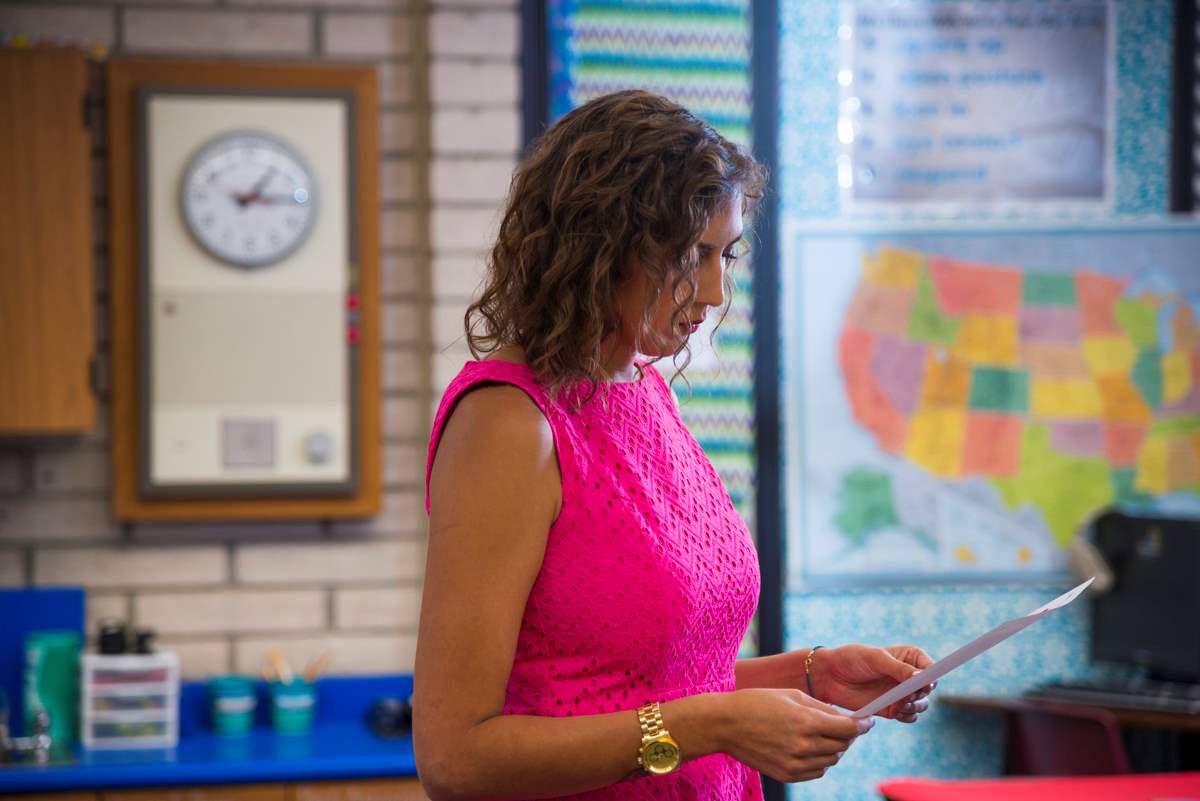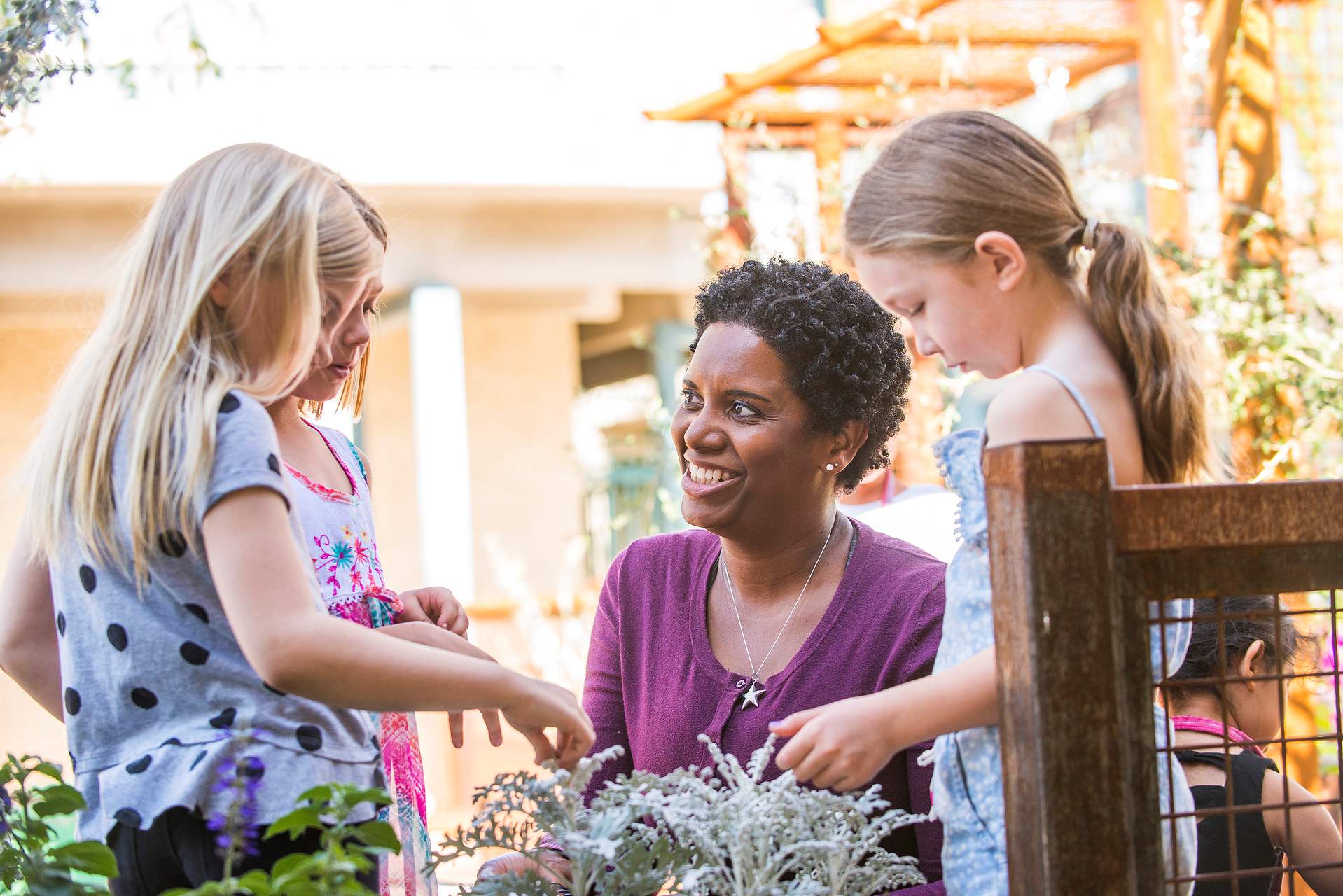InClass
Arizona teachers share their experiences adapting classroom learning to online instruction during the COVID-19 pandemic.
Jun 05, 2020Educators are nothing if not adaptable. And the coronavirus pandemic put those skills to the ultimate test. Suddenly, teachers had to modify their curriculum and their methods to teach students remotely. From access to technology to video chats, the obstacles were many. But, unsurprisingly, Arizona teachers rose to the challenge. Here they share their experiences and the lessons they learned during the COVID-19 pandemic.
--
The Human Nature of Teaching
One of the biggest hurdles during COVID-19, according to educators? Connecting — with students and each other.
“I think the biggest challenge we're still struggling with — and I don't know that we've really overcome it, but we are making great strides — is the physical disconnection from the very human nature of teaching,” explains Alaina Adams, Ed.D., NBCT, Assistant Principal in Residence at the Phoenix Union High School District. “We know that online teaching is available and many school systems do have blended learning options, as do we, but the social constructs that come with all of that — the political ramifications, the equity issues, the opportunity — all those things have made those physical connections very difficult.”
For Mark Paulsen, M.Ed., NBCT, who teaches middle school science at Pat Tillman Middle School in the Balsz School District in Phoenix, distance learning eliminated the ability to continue the hands-on nature of his class. From introduction of phenomenon to lab to discussion, the students of Paulsen’s class learn by interacting with one another. “I would learn from my students, my students would learn from each other, and this whole community aspect is how we engaged in science,” he says.
When COVID-19 sent teachers home to teach and students home to learn, educators like Paulsen were charged with changing how they delivered information to their students. “Due to the asynchronous structure of remote learning that honors my students’ ability to learn at any time, I would have to record a video, and then I'd have to give that video to my students,” Paulsen says. “And there was no discourse, there was no student-to-student interaction.”
Greg Stafford, M.Ed., NBCT, who teaches general and advanced placement physics to 11th and 12th graders at Desert Ridge High School in the Gilbert Public School District, shared a similar experience. “I want to see the reactions, I want to see the faces, I want to see if someone has a puzzled look on their face,” he says. “My philosophy is bringing energy to the classroom in a hands-on, minds-on way. That really was hampered through online learning.”
The Reality of Inequity
As educators began to connect with students digitally, another key hurdle became immediately apparent — students’ ability to access technology was far from equal.
“To assume that all my families have more than one device at home is not accurate,” says Gabriela Chai, M.Ed., NBCT-ENL, kindergarten English language development teacher at Lynn Urquides Elementary School of the Tucson Unified School District. Most of her students’ families have one device at home that’s used for emergencies, and many lack the resources to install Wi-Fi. “Contracting the services from the local cable company can be quite expensive for someone who earns minimum wage,” Chai says.
In response, TUSD loaned laptops and other devices to students and partnered with internet providers to offer low-cost internet programs for its families and employees.
Access to digital resources was a challenge also witnessed by Melissa Gutierrez, third-grade teacher at Ruth Powell School in the Safford Unified School District. While Safford worked to get devices to students who needed them, not all students had internet access. For these students, book work was an option, while others used Google Classroom to receive and complete their work. “I really wanted to meet all of their needs and get the best information and education I could out to all of my students regardless of their situation,” Gutierrez says.
The Adaptive Nature of Educators
To navigate the choppy waters of the pandemic, teachers and administrators banded together to keep connections with their students thriving.
Phoenix Union High School District, for example, launched an “every student, every day” initiative that assigned 10 students to each staff member with the goal of connecting with each student every day. From snail mail to phone calls, “we mobilized … and we found all of our kids through some method,” Adams says.
At Balsz, a five-phase plan was initiated. From connecting students to content to providing resources like meals to administering meaningful feedback to students, the plan was designed to help teachers “attack this COVID-19 pandemic with curriculum and instruction,” Paulsen says.
And in their homes, teachers took strides to adapt to the needs of their students.
Paulsen, for one, knew the constructivist approach his class took to learn science wouldn’t work remotely and that labs would be near impossible. He needed a new approach. “I had to relearn everything. And that's where I was after 13 years of figuring this out, I now was a brand-new teacher. How do I navigate through this new space?”
Chai felt the same way. “The logistics of it were overwhelming,” she says. “My planning, delivery, and instruction had to change specifically for a group of kindergarteners learning online.” Chai was able to successfully navigate the transition to distance learning with support from TUSD. Her school’s technology department, for example, helped teachers set up virtual classrooms, use videoconferencing accounts, and install security measures, while the district provided professional development until the last days of the school year.
For Stafford, adapting to teaching with online tools was a challenge, but one that offers solutions that can help his students moving forward, even in a classroom setting. Being available digitally for office hours, for example, adds opportunities for students who may not be able to connect in-person to get the help they need. Likewise, creating videos that tackle advanced types of problems that are accessible to students online in an on-demand format can provide improved access for students to get help outside of the classroom.
“Since I've been thrown into the deep end with these technology tools, let's use them effectively to help out the students,” Stafford says.
The Lessons Learned
Despite the challenges presented by COVID-19, Arizona teachers are walking away with valuable lessons they will carry into the future.
For Gutierrez, the importance of relationships has never been clearer.
“Something I've always known, and that was reinforced for me during this time, is that relationships matter,” Gutierrez says. “Teachers must take the time to build relationships with their students and families. When this is done from the beginning of the year and continues throughout a student’s time in school, they can overcome almost anything. Students who care about their teachers, classmates, and school will work through any adversity to get things done, and it's amazing to witness.”
Paulsen, who also serves in a supportive role to fellow teachers as department head of science for fifth through eighth grade at Pat Tillman Middle School, similarly underscored the value of relationships — between teachers and students, teachers and teachers, and teachers and administrators. “The relationships I built for the first three quarters came full-steam ahead in the fourth quarter,” he says. “Relationships are the most valuable thing that I've learned throughout this. I have to maintain those relationships, and I cannot take that for granted."
Chai underlined the importance of training and, specifically, National Board Certification. “During this time, I learned to appreciate and to value the numerous trainings I have taken over the years,” she says. “I am elated that I achieved National Board Certification because it taught me how to be perseverant, accommodating, flexible, understanding, and always guide myself and my instruction with equity, equality, and justice."
As educators move forward after COVID-19, Adams sees a need for differentiated support for teachers.
“[The pandemic] highlighted some really wonderful strengths, or achievements, in our teaching force and that is that they're committed and they're compassionate, and those are definitely core values that Phoenix Union embodies,” she says. “But also it highlighted a need for support with differentiation.
“If we're now in a public education landscape where it's truly going to be personalized learning, where we're going to have to maybe differentiate bell schedules or resources, and blend in-person with online instruction to keep everybody safe, it highlights the inequities that have been out there as far as professional development, even down to our teacher training programs — the need for true differentiation,” Adams says. “To have a fully stuffed toolbox as an educator and be able to pull out the just-right tools, whether they are face-to-face or online tools, is a huge undertaking. To use the just-right technology to leverage their relationships and get exactly what those students need — those students in that setting at that time using technology to do it — is the big task.”






